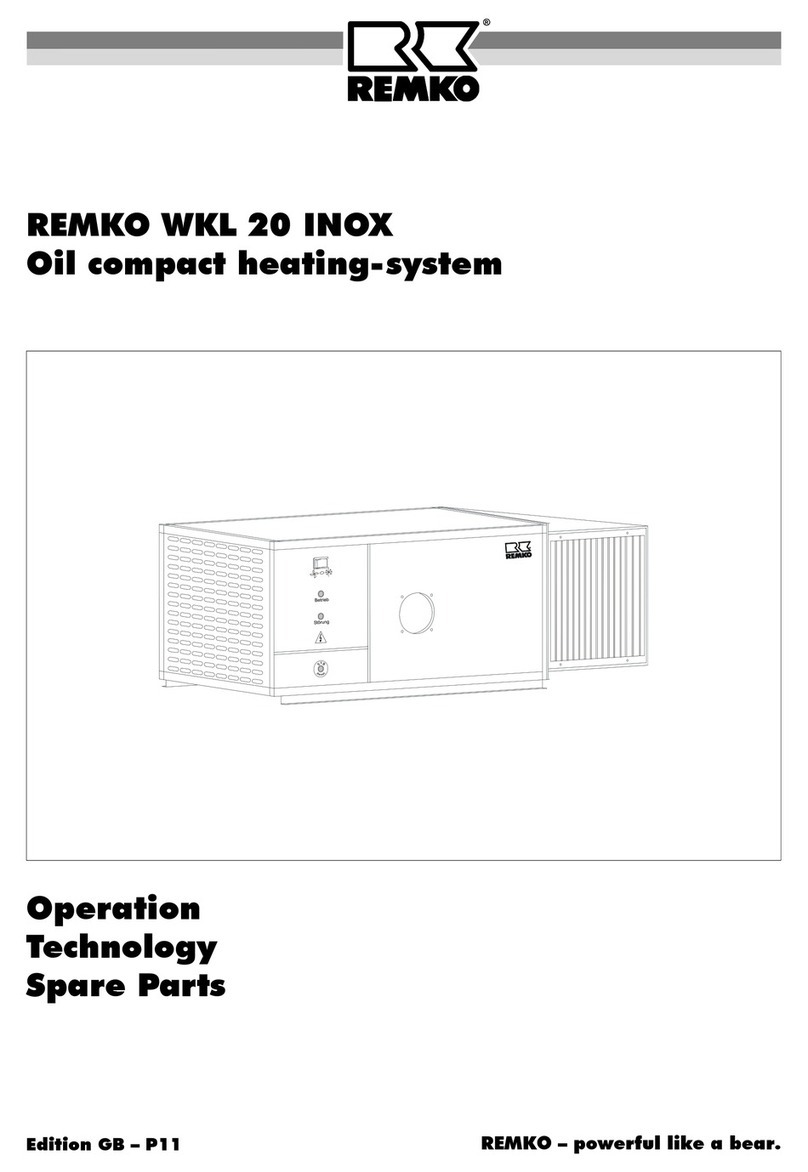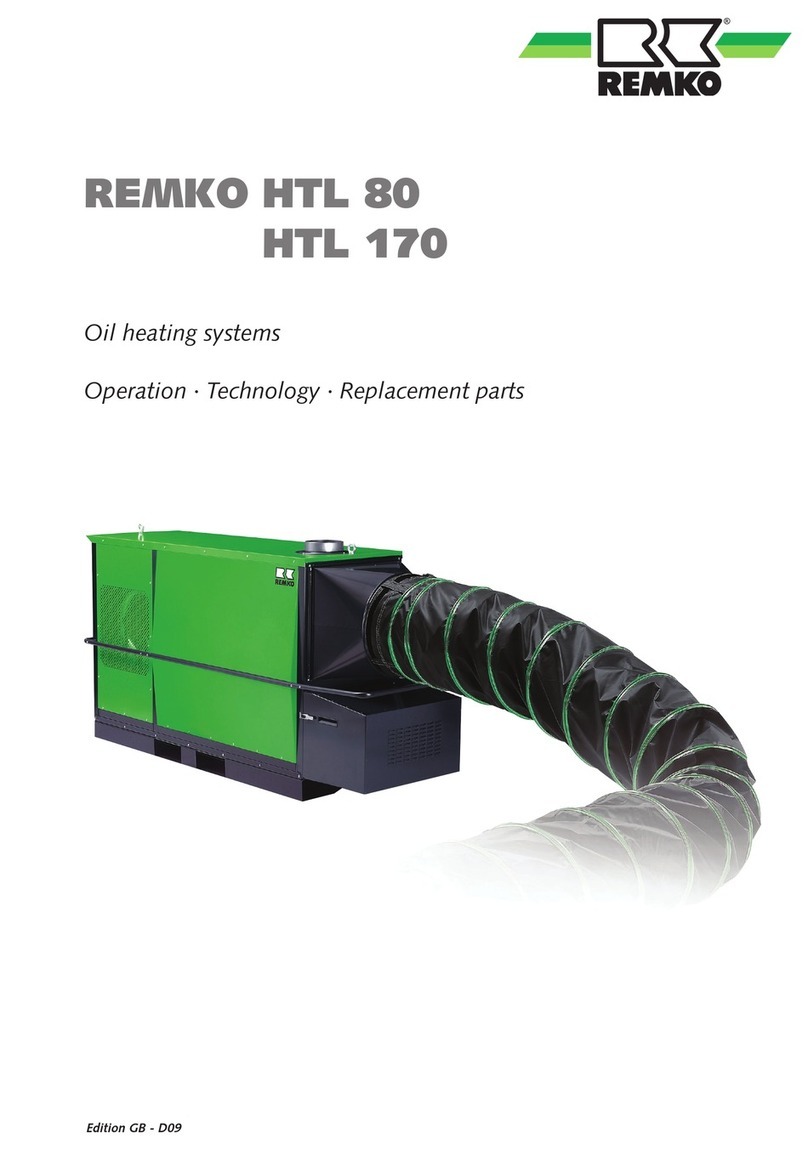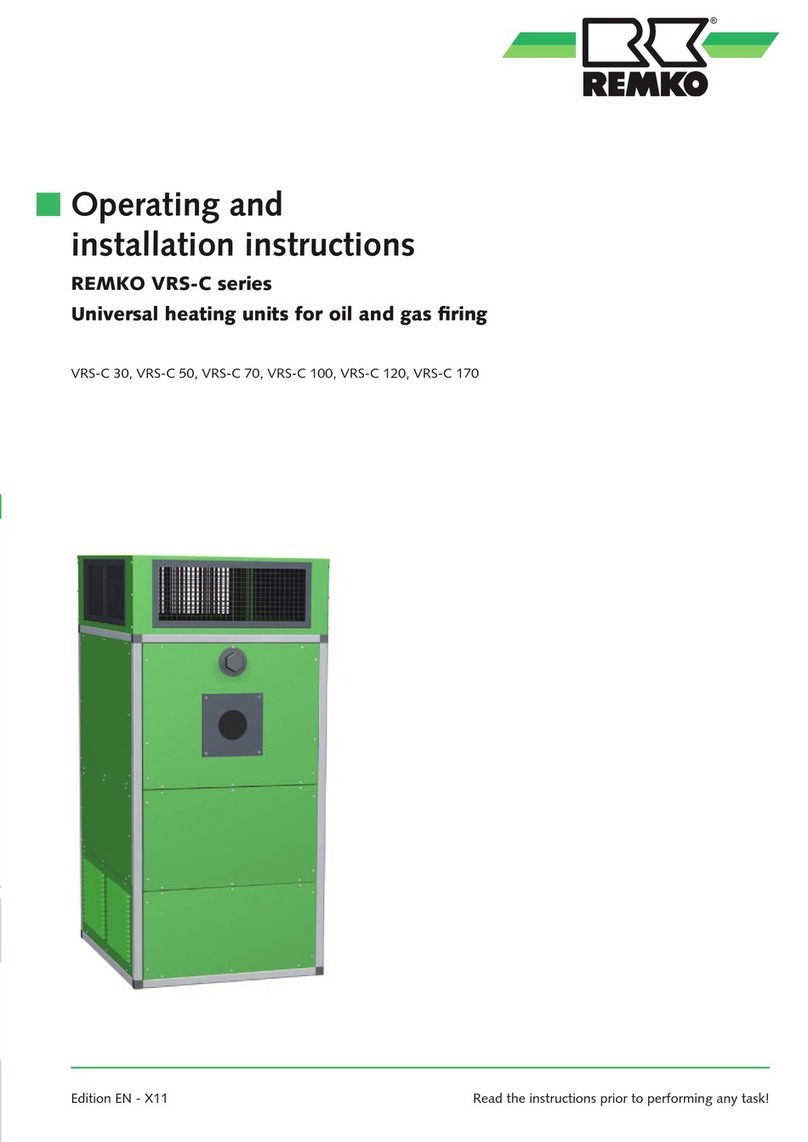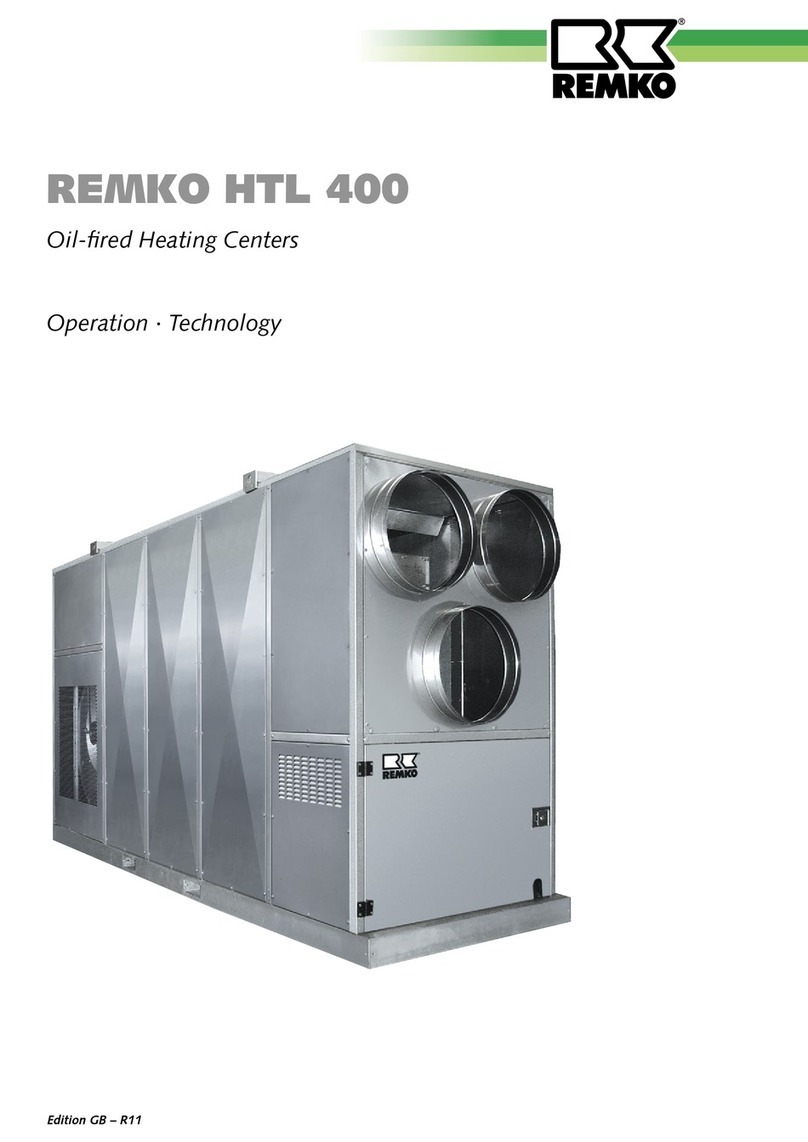
8
REMKO VRS EN Series
Selection of the installation
location
With determination of the installation
location, the requirements must be
coordinated in regard to:
1. Fire protection and operational
hazard.
2. Function:
Space heating free-blowing or
with duct system.
Observe pressure conditions in
the installation room.
3. Operational issues:
Heat requirement, air volume
flow, recirculation or fresh
air operation, humidity, air
distribution, room temperature,
space requirement.
4. Facility for connecting to an
exhaust gas system.
Oil and gas-fired fan-assisted heaters
(also with a nominal heat output of
more than 50 kW) may generally be
installed outside of heating rooms in
compliance with the FeuVo.
The building authority guideline
for the "Erection and installation of
combustion appliances" must be
observed.
For rooms in which highly
flammable substances or mixtures
are processed, stored or produced
in such quantities that ignition
creates hazards, exceptions may
be permitted if suitable measures
are taken to ensure that the
substances or mixtures cannot
be ignited by the combustion
appliance.
With the installation of the units,
the local and country-specific
regulations (LBO) and combustion
plant order (FeuVO) of the
respective state must be observed.
The first enactment of the
(German) Federal Emission
Control Act (1st BlmSchG)
and the statutory provisions of
the ordinance governing small
combustion plants (1st BlmSchV)
must also be applied.
The fuel supply must be installed
in accordance with DIN 4755 for
oil-fired warm air heaters, DVGW
Code of Practice G 600 for gas-
fired warm air heaters and TRF for
liquid gas.
However, fan-assisted heaters in
particular are excluded from some
points.
Installation instructions
Combustion air supply
Sufficient supply of combustion
air must be generally ensured by
the respective building authority
requirements.
Excerpts from the M-FeuVO (may
differ slightly per federal state).
(1) For room-air dependent
combustion appliances with a
total nominal heat output of
up to 35 kW, the combustion
air supply shall be deemed to
be verified if the combustion
appliances are installed in a
room that:
1. Has at least one door to
the outside or a window that
can be opened (rooms with
connection to the outside) and
a room volume of at least 4 m3
per kW total nominal heat
output or
2 . Has an opening leading to
the outside with a clear cross-
section of at least 150 cm2or
two openings of 75 cm2each
or pipes leading to the outside
with cross-sections equivalent
in terms of flow.
(2) For room-air dependent
combustion appliances
with a total nominal heat
output of more than 35 kW
and not more than 50 kW,
the combustion air supply shall
be deemed to be verified if
the combustion appliances are
installed in rooms that meet
the requirements per paragraph
1 No. 2.
(3) For room-air dependent
combustion appliances with
a total nominal heat output
of more than 50 kW, the
combustion air supply shall be
deemed to be verified,
NOTE
Only type-approved forced-
air oil burners in WLE design
(per DIN EN 267) or gas
burners (per DIN EN 676)
should be used.
CAUTION
The units must be set up and
installed in such a way that
they are easily accessible
for monitoring, repair and
maintenance work.
CAUTION
Overpressure and underpressure
in the installation area
should be avoided as this will
inevitably lead to combustion-
related malfunctions.































